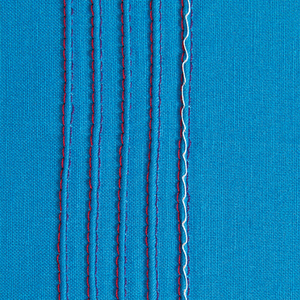How to Sew Blind Tucks
Lock the tiny pleats in place with hidden stitching
Narrow knife pleats, like those on the dress on the back cover, can be classic and chic. Unless they are heat-set into the fabric, though, they’re nearly impossible to maintain. One way to get this sophisticated look is with blind tucks. In this pleating technique, the folded (leading) edge of one pleat falls over and conceals a line of stitching that secures the tuck below it, hence the name “blind.” The pleats are held in place so they always look neat with a minimum of care. They can’t open and, therefore, are decorative details rather than shaping or fitting elements.
To mimic the type of look shown in the inspiration dress’s bodice, start by creating a piece of fabric that is entirely sewn with tucks; from it, the garment section or sections are cut. This method uses a lot of fabric, but the results are worth it. I realized this embellishment would be a perfect detail for an evening-style shirt, as an elegant riff on the traditional tuxedo shirt. Rather than the usual vertical pleats on the shirt’s bib, I set the blind tucks on the diagonal—as the vintage dress’s designer did. Bear in mind that the tucks are folded and stitched on the fabric’s cross-grain, and the inset panel is cut on the tucked fabric’s bias.
Plan the tucks
Tucks and pleats can be confusing to visualize as you draft, fold, and sew them. Follow the diagram to keep track of your tucks.

Terminology
Tuck depth: The total amount of fabric contained within the tuck.
Leading edge: The fold that is visible at the edge of the tuck when viewed from the right side of the fabric. We will mark the leading edges onto the wrong side of…
Start your 14-day FREE trial to access this story.
Start your FREE trial today and get instant access to this article plus access to all Threads Insider content.
Start Your Free TrialAlready an Insider? Log in


































Log in or become a member to post a comment.
Sign up Log in